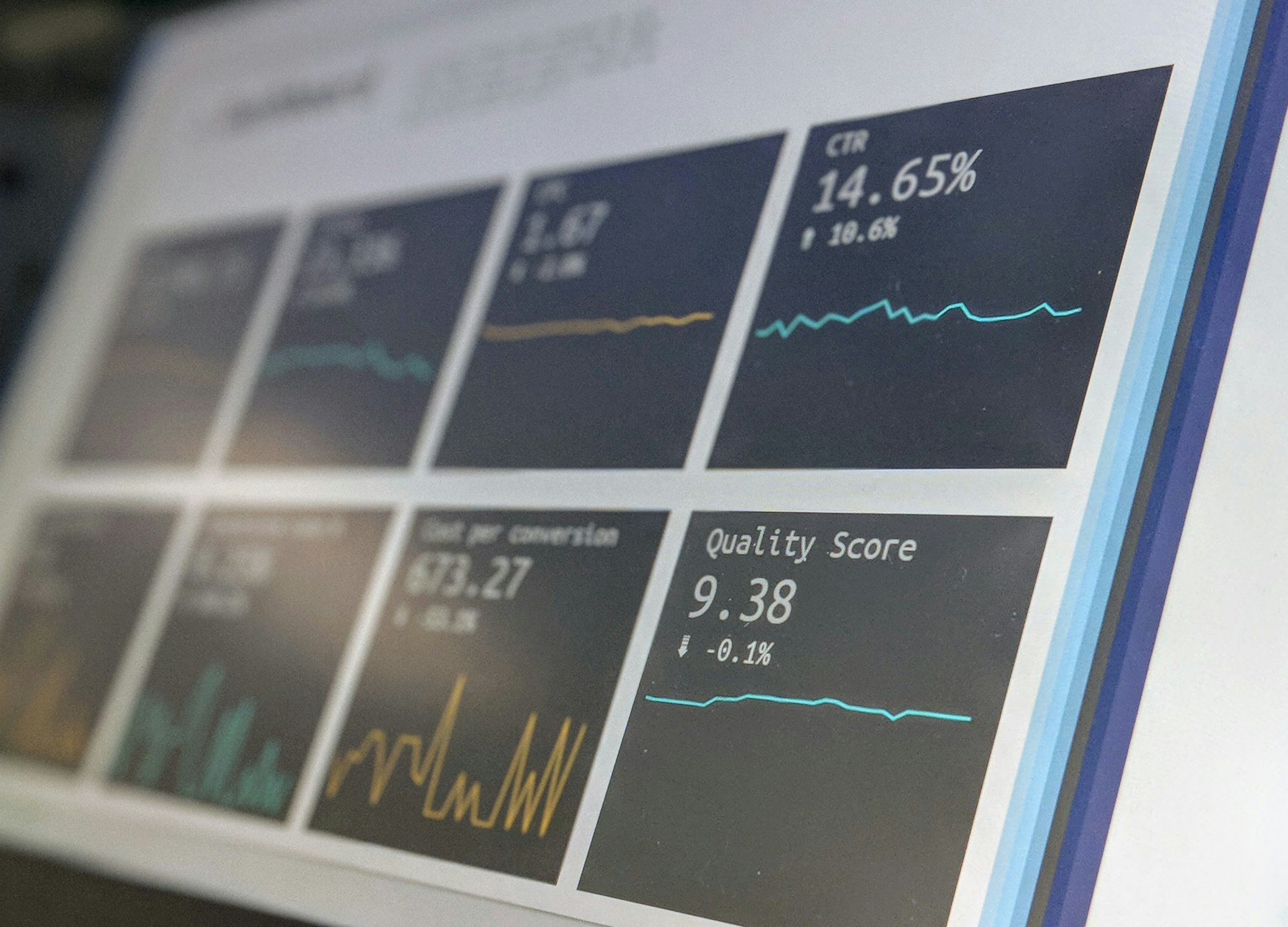A successful resume does two things:
- Gets past automated systems that evaluate your resume before a human ever sees it.
- Impresses the recruiter or hiring manager enough to invite you in for an interview.
It may feel like the easiest thing to do when writing a new resume is to throw up your hands and say, “I don’t know what those automated systems are looking for, how am I supposed to get past them?”
As it turns out there are some simple, concrete steps you can take to make sure your application gets past the machines and on to a recruiter’s desk. Then it's just a few more best practices to make sure the hiring manager is impressed and you’ve got yourself an interview.
Here are the steps we’ll cover in more detail below:
Step 1: Getting past automated systems
- Use a clean, professional template
- Include all of your contact info clearly at the top of the resume
- Keyword match
- Use similar language to the job description
- Use hard numbers
Step 2: Standing out to recruiters and hiring managers
- Tailor the language in your resume to the job description
- Make it scannable
- Hard numbers (again)
- Fit it on a single page
- Only share it as a PDF or as a dynamic, online page

Why do I need a tailored resume?
Writing a strong, successful resume isn’t what it used to be. The days when you could walk in to an employer’s office and chat with the manager while turning in your resume are gone. Back then, you only needed a single resume that you would pass out to a few different jobs, and you’d be able to explain how you were qualified for that job in person while talking with someone at the business.
These days, not only are automated systems reading your resumes before a human ever gets it, but there are often hundreds of people applying for the same job. And when only a tiny percentage of those applicants get invited to interview, you’ll want to ensure you have the strongest resume in the bunch.
Luckily, writing an awesome resume doesn’t have to be hard (and, in fact, it can be quick and easy – see How to make this process easier and your resume more effective below). You just need to know how those automated systems work and what modern employers are looking for.
Let’s take the process step by step to see how to write a resume that will get yours to the top of the stack.
Getting past automated systems

What are ATS?
Modern applicant tracking systems (ATS) use a combination of keyword matching and more advanced Natural Language Processing and AI to evaluate each resume a company receives. They often start by checking generic criteria like how long you were in your last job, how close you live to the office, or your highest level of education.
Next, these systems evaluate how well your resume matches the particular job to which you’re applying: Does it use the same keywords? Does it use language that’s similar to the language in the job description? Does your education match the education in the description?
These systems also know what a good resume looks like and how it should be formatted, and can reject resumes that are too far outside of what it expects.
If the system scores your resume highly, it will be passed along to a hiring manager or recruiter within the organization. If not, there’s a chance a human will never even see it.
While these systems used to be only available to big companies, many options are now available for relatively cheap that makes it very likely the organization you’re applying to will use one.
Luckily, we can use that to our advantage! If you can get past those systems (you can!), you’ll already have a major leg up on your competition.
How to get past them
1. Use a clean, professional template
The very first thing you need to do is make sure you’re using a clean, professional template or layout for your resume. Automated systems can get tripped up on weird layouts, so unless you’re applying for a visually-creative position it’s best to stick with a tried and true template to make sure the system can process it correctly.
In general, most templates you find in online resume generators, Microsoft Word, or Google Docs will do fine, though it’s worth making sure the company or website you choose is following current best practices for their templates, as these can change over the years.
If you do use Word or Google Docs, make sure to export your resume as a PDF before submitting it to ensure the ATS can read it correctly.
Examples: This Word template or the Savviest Professional template.

2. Include all of your contact info clearly at the top of the resume
Make sure you choose a template that clearly displays all of your contact info. Your name and email are most important, but because some systems rank on where you’re located, it’s best to include your address. Some employers want phone numbers as well, so we recommend including one if you're comfortable doing so.
Example:
Katie Collins
1234 Pine St.
Denver, CO 56789
katie.collins@example.com | (123) 555-5555
3. Keyword match
NEVER send in a generic resume to a job that has a job description. This will become important in the next section as well when standing out to recruiters, but it’s equally as important here. Those automated systems' core functionality is matching keywords from job descriptions to your resume.
The SINGLE MOST IMPORTANT thing you can do is to send in a new, tailored resume to each job for which you're applying. (Luckily, this doesn't have to be a tedious process – see How to make this process easier and your resume more effective below).
So, how do you tailor your resume? Go through the job description and pick out any words and phrases that come up multiple times, are near the beginning of paragraphs, or seem important to this particular job. Describe your experience using those exact words and phrases (but remember – never lie on your resume, it becomes really obvious when you do your interview).
The more you can do this across your work and education the better, but repeating the same exact words over and over is also bad. Instead, once you’ve used a particular keyword a couple of times, use synonyms and related terms. Most automated systems these days will pick up on those just fine.
Example (bold to emphasize important keywords and matches):
Job description:
Savviest is looking for a software engineer with 3 years of experience working with modern front-end frameworks, Python, and cloud technologies.
Resume line items:
* Wrote Python script to automate pushing new builds to the cloud.
* Led a team of front-end engineers to build a new payments platform that increased conversions by 40%.
4. Use similar language to the job description
This may sound a lot like #3 above, but there’s an important distinction. While #3 was about matching particular keywords, #4 is about matching the style of writing and getting in the ballpark of the language of the job description.
This means similar sentence lengths, similar focus on skills and history that mirror the types of projects and responsibilities described in the job description. Automated systems are often trained on previous employee’s resumes and job descriptions, so they’ll be looking for language similar to those.
Example (bold to emphasize important keywords and similarities):
Job description:
We are looking for a self-motivated and ambitious sales manager who is excited about selling to the most important companies around the world and will lead by example.
Resume line items:
* Led educational sales effort that resulted in 80% growth year over year.
* Motivated self-starter who introduced new CRM and on-boarded entire team.
5. Use hard numbers
Recruiters and hiring managers like to see hard numbers. Ask yourself questions like these and use the answers as line items in your resume.
- How much money did your project save for the company?
- How many new customers did you bring on?
- How much did you sell in that position?
- How many people did you manage?
Automated systems are trained to look for numbers as well, so try to include at least a few line items per job with quantitative data about exactly how your contribution helped.
Examples:
* Managed and mentored a team of 4 interns for 3 months each summer.
* Responsible for closing the register each night and handling up to $10,000 per day.
* Created and led new marketing campaign that brought in over 300 new paying customers.
Summary
If you follow these five steps, you’re already ahead of many people who don’t know how often their resumes are being read by automated systems.
Luckily, much of the work you did from these steps will increase your appeal with hiring managers and recruiters as well, but be sure to follow the steps below to stand out when a human reads your resume.
Standing out to recruiters and hiring managers

1. Tailor the language in your resume to the job description
You’ve already done this to a certain extent by following the instructions above, but it’s so important that it’s worth calling out twice. Make sure your resume is customized for that specific job every time you apply.
If recruiters wanted a generic resume they would just ask for your LinkedIn and be done with it. No, they want the precise ways in which you fit with that particular job.
Recruiters often hire for positions they don’t know well, and all they have to go by is the job description itself. Match keywords from the job description, use similar writing styles, and make sure that it’s obvious your background and resume match this job as closely as possible so that the recruiter knows your application should be passed on to the hiring manager.
Example (bold to emphasize important keywords and matches):
Job description:
Qualifications: BS or BA in English, Writing, related field, or 4 years of professional editing experience. Must be proficient with Word, Publisher, InDesign, or other publishing tool.
Resume line items:
* Oversaw publication of college newspaper as a Managing Editor.
* BA in English
* Highly proficient with Adobe InDesign, and Microsoft Word.
2. Make it scannable
Recruiters take an average of 30 seconds to read each resume (and some studies have found it's as low as 6 seconds per resume). If they can’t quickly and easily get the most important information out of yours, you’ll fail to stand out and move to the bottom of the pile.
Here's how to make your resume easier to read:
- Use consistent formatting, a clean template, and descriptive sentences.
- Don’t add filler words to bulk up your resume, they will mask the information the recruiter needs.
- Consider submitting your resume as an online page (see #5 below) to give employers automated summaries and make you further stand out.
Examples: This Canva template or Savviest's Clean template.
3. Hard numbers (again)
Managers like data. When describing your accomplishments at previous jobs, use specific numbers for how successful you were. You’d be surprised how just adding one or two can catch the eye of a recruiter and give you an easy leg up.
Examples:
* Published 3 articles per week on a blog that was read by over 4,000 people.
* Advised 30 students per semester for a total of almost 1,500 students in my first 5 years.
* Designed and animated 200 unique characters used in 12 different games.

4. Fit it on a single page
If you’re submitting your resume as a PDF, try to keep all your info on a single page. We’ve known managers who would throw away resumes without reading them if they were longer than a single page.
If you’re submitting online and can link to your resume, that becomes less important (especially if your online resume has summary content).
If you’re submitting both a PDF and an online link, still shoot for a single page or submit a shorter one in the PDF and a longer one online.
These resumes from MIT show how to fit a lot onto a single page.
5. Only share it as a PDF or as a dynamic, online page
Microsoft Word or Google Docs are fine programs to write your resume, but you never know how it will look to an employer. When you’re ready to apply, make sure you save your resume as a PDF and apply with that.
If applying with a link to an online resume then you’re all set, as those sites will ensure that your resume looks consistent and professional to everyone.
Examples: This PDF resume or this online one.
Tips for writing resumes as a student

If you’ve spent most of your life in school, it’s likely that you don’t have a lot of work history to fall back on in your resume. That’s ok! Employers understand.
In these cases, feel free to list your education first, and highlight all of your accomplishments while in school. If you took relevant classes to the position for which you’re applying, list those close to the top to make sure the hiring manager or recruiter notices (and so that the ATS picks up on those keywords).
Class projects can also fill in for a lack of work experience, so add those too if they match any of the work that’s included in the job description. Using a Skills section is a good way to bulk up your resume and call out what makes you a good fit for that job.
Volunteer positions, work study, and internships all look good on a resume. Include those as you would a job in your work section (though you should make it clear that the positions were volunteer if that’s the case).
Examples: These resumes from LaVerne.
Should I include references in my resume?
References can strengthen an application in the right circumstances, but are more useful to employers once they’ve had an interview with you and want to take the next steps toward hiring.
Instead of taking up space on your resume, or submitting a two-page document, you can add a line at the bottom saying “References available upon request.” Then, once you’ve aced that interview, the manager can get your references and follow up.
How to make this process easier and your resume more effective
The lists above are extensive and they may feel like an unmanageable amount of work when applying to many different jobs, but it doesn’t have to be. There are many different websites and programs that help with some or all of the steps above, and make creating great resumes much simpler.
For instance, most online resume builders will give you professional templates and help you design your resume based on best practices. Other services can help you tailor the language in your resume to a particular job description, and still others will allow you to share your resumes online.
If you want something that covers every step outlined above, check out Savviest.

With Savviest, you can create custom tailored resumes for every job you apply to with a single click. In just a few seconds you can get a new resume adapted specifically for a particular job that uses professional templates and best practices.
Then download PDFs or share your resumes online (or both) to get past automated systems, stand out from other applicants, and get hired.
Interested in how Savviest works or how it can help you land your next job? Feel free to reach out with any questions! We’re always happy to chat over best practices and how to write great resumes regardless of whether you use Savviest or not.
No matter how you choose to build your next resume, if you follow the steps above you’ll already be miles ahead of your competition. Good luck, and go land that dream job!

